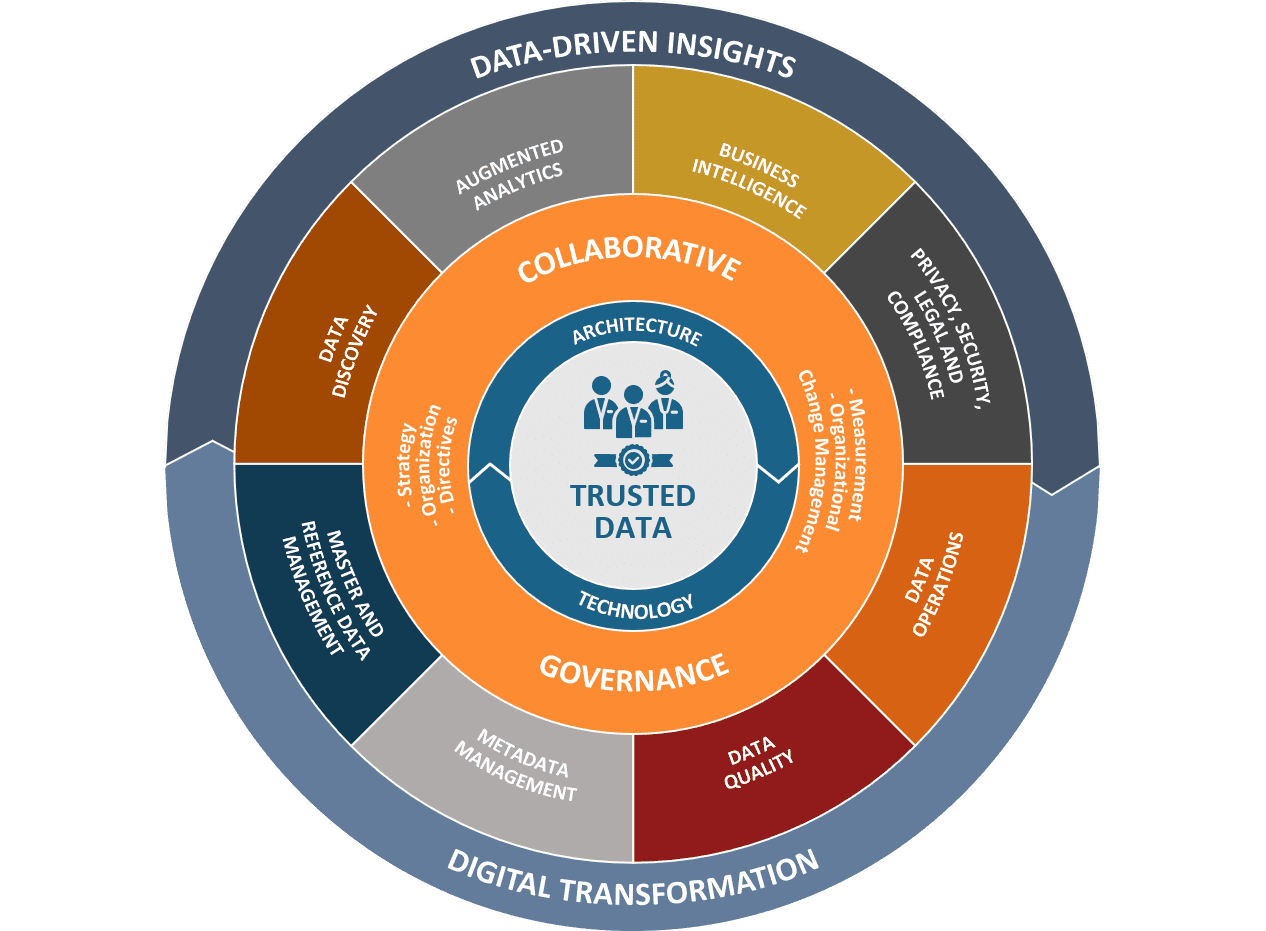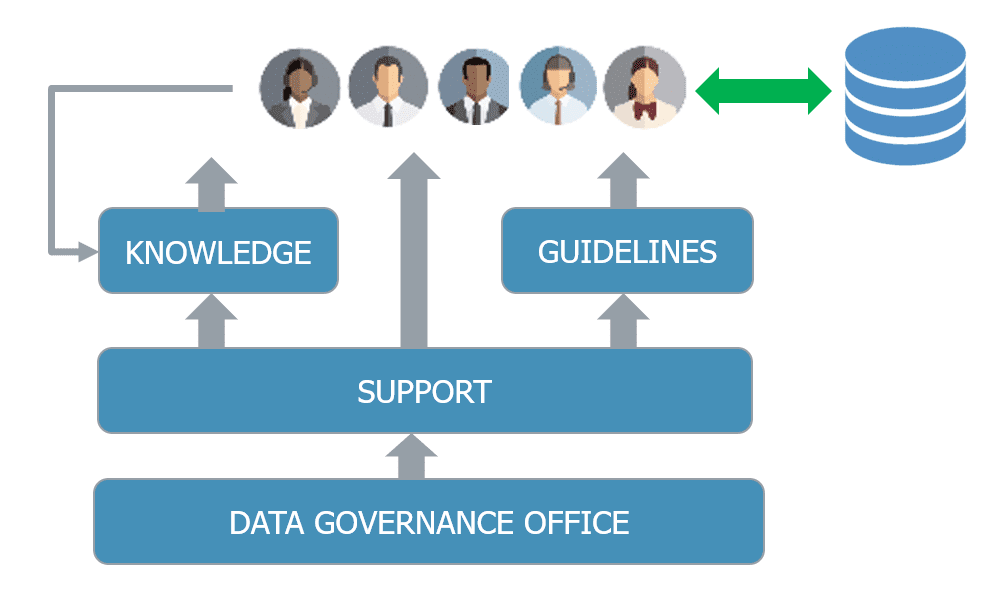
Shortened time frames to leverage business insights and navigate data privacy and ethics call for the next generation of Data Governance (DG). This DG describes a collaborative, thoughtful, long-term framework consisting of processes managing trusted data assets across the organization. Kelle O’Neal, Founder, and CEO of First San Francisco Partners, sees a need to make firms aware of Next-Gen Data Governance, while at the same time helping companies adapt to successful Data Governance practices with other business areas.
Recognition that good Data Governance has become a must has come none too soon. Donna Burbank, Managing Director at Global Data Strategy, notes that many companies are beginning or planning to begin a Data Governance program, including a broader range of industries than before.
However, spreading an existing successful Data Governance framework in one business area does not necessarily translate across the entire enterprise, or even to another company. Freddie Mac tried several times to implement DG driven by IT, and nothing stuck until a next-generation proactive and collaborative Data Governance took hold.
Unfortunately, many companies, like Freddie Mac, get stuck in old patterns, trying to evangelize rigid Data Governance practices, gumming up operations, and fostering mistrust. Firms in this situation, according to Derek Steer, CEO at Mode, end up governing the wrong amount of data (missing the highest priority data assets) or enforcing Data Governance poorly (spending too much or too little time maintaining Data Governance logic).
Repurposing Data Governance frameworks to take on the successes demonstrated by the newer generation can be done. Freddie Mac does this by operationalizing DG and engaging all levels of its organization. The first steps include understanding lessons from initial DG processes, how DG has changed, and how the next generation works better to support the business.
Data Governance Originated from Frustration
Kelle O’Neal explains that first Data Governance attempts started from frustration. Organizations saw poor Data Quality that was fixed too slowly and only when business people noted a problem or when they had time. This exasperation with Data Quality intensified, and executives reacted by implementing a DG program. Usually, DG was initiated to help an ailing project or business function get back on track.
So, companies started with a traditional top-down, oligarchical approach. Executives appointed a Data Governance Council or committee and then let them take over, usually dictating rigid policies and procedures across the enterprise, without the authority to do so. Most of an enterprise’s Data Governance rested on a few shoulders with little support from the top. See the diagram below:

Anil Chakravarthy, CEO of Informatica, gives an example of an organization starting a Data Governance program to centralize all enterprise data in a data warehouse. This firm ended up using a select team of employees to check whether the information was complete and consistent. He added, “That approach simply does not scale [anymore]…”
Past mistakes and a more significant DG scope requires a Non-Invasive Approach, touted by next-generation DG, which recognizes existing employees and enterprise culture ahead of reacting to technical project failure.
The Next Generation: Collaborative Governance and Trusted Data
DG next generation supports and empowers business to be proactive instead of passively following rules from people or committees who have less experience with that data. Stijn Christiaens, co-founder and CTO of Collibra, says, “Data Governance is about the people and the processes they follow.” Both are necessary for trusted data, the core of any enterprise.
Christiaens’ conception can also be visualized through Kelle O’Neal’s graphic presentation:

In the image above, Collaborative Governance builds upon strategic, operational, and directive methods providing core trusted data. Meanwhile, measurements, technology, and change management drive the enterprise’s Data Governance toward being more efficient and proficient.
People across the organization may practice and communicate DG across different resources, from Augmented Analytics and Self-Service BI to Compliance and Data Quality, according to O’Neal’s graphic. But the results of Data Governance processes, activities, and capabilities focus on digitally transforming the organization and providing the data insights to keep the business competitive.
Next-Generation Data Governance within the Organization
What does this next generation DG look like within the organization? While DG specifics may differ depending on company culture and maturity in thinking about data, next-generation DG presents a more agile and democratic framework. It is better able to balance the flexibility to be innovative, with accountability required for regulations, and to be ethical. See the diagram below:

During her recent Enterprise Data Governance Online presentation, O’Neal broke down Next-Generation Data Governance components as follows:
- Data Governance Operationalization: No longer solely a one-time project, Data Governance becomes more permanent and is supported through a Data Governance Office (DGO). This department or business function, typically separate from IT, provides long-term and short-term support to keep data practices legal and ethical and to accommodate delivery and development of new sources.
The Data Governance Office focuses on business services. Where the DGO may send resources on a project or to a specific department for a limited time, the DGO also handles more permanent tasks for the business.
- Cross-functional Data Governance Teams: The organization sees Data Governance as a shared responsibility, not just either an IT or business obligation. Next-generation DG practice, then, requires cross-functional teams to work together, keeping business activities around protecting and sharing data in sync.
- Regular Communication About DG: DG has to evolve to prioritize and handle changing contexts and shortened time spans to make decisions. So, interdisciplinary teams need to meet regularly and frequently, to review and update any existing DG guidelines. Besides, DG groups may require additional standards in response to disruptive technologies and new developments in the marketplace, such as instant buyers or i-buyers using machine learning to buy a cluster of homes or other real estate as inventory and then repricing them to profit.
- Executive Involvement: O’Neal recommended hiring an executive(s) to offer direction, authority, and support for Data Governance teams and their activities. This executive(s) may be or comprise an existing Chief Analytics Officer and a Data Acquisition Lead, among others. The manager’s title means less than the trust and data strategy communications and alignment they direct. This senior leader needs to have the authority to hold data stewards and owners accountable in protecting data assets.
Some companies have looked outside their executive pool to recruit a Chief Data Officer (CDO). This person takes responsibility to protect and leverage enterprise data assets, serve the business and data strategies, and grow the organization in its data maturity, in addition to fostering Data Governance.
Executives, like CDOs, know data technologies and have some hands-on experience but are not necessarily groomed from IT. Only about 9 percent of CDOs come from an IT background.
- Self-service Application of Data Governance: Administrative support and other next-generation policies empower individuals as close to the end-user as possible, on making the right decisions, “just in time,” on accessing, using, and securing data. Self-service understanding about enterprise data (its metadata and lineage) from business glossaries, data dictionaries, or data catalogs, play a crucial role in making data workers independent.
As a result, if an external or internal customer has a question, the corresponding terminology, technology, and history of the data are communicated clearly and consistently from the start. Should discrepancies exist, people down in the enterprise’s trenches working with the data become responsible for feedback and updates to DG documentation and data stewards.
Taking an organization to the next stage of Data Governance, by combining its different aspects, has become necessary to cover data volumes, speeds, and variety. The more an organization can grow collaborative, proactive, and hands-on Data Governance throughout an organization, the better positioned that company is in the marketplace.
By understanding Next-Generation Data Governance, companies can repurpose their Data Governance to something that works. Freddie Mac has given users quality data when they need it, through revamping its DG to include everyone and to be ongoing. Its people have bought into a non-invasive form of Data Governance. Freddie Mac’s DG success story continues as a next-generation DG inspiration—and a reality.
Image used under license from Shutterstock.com
